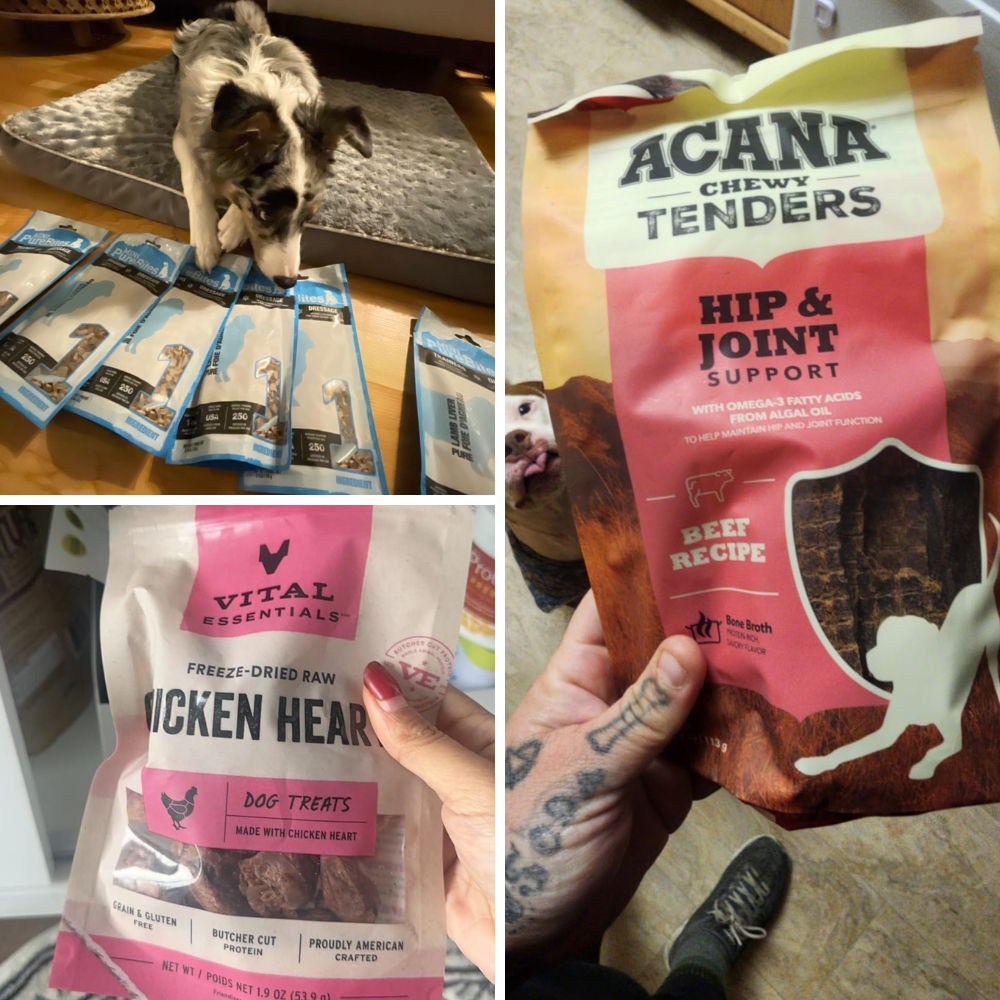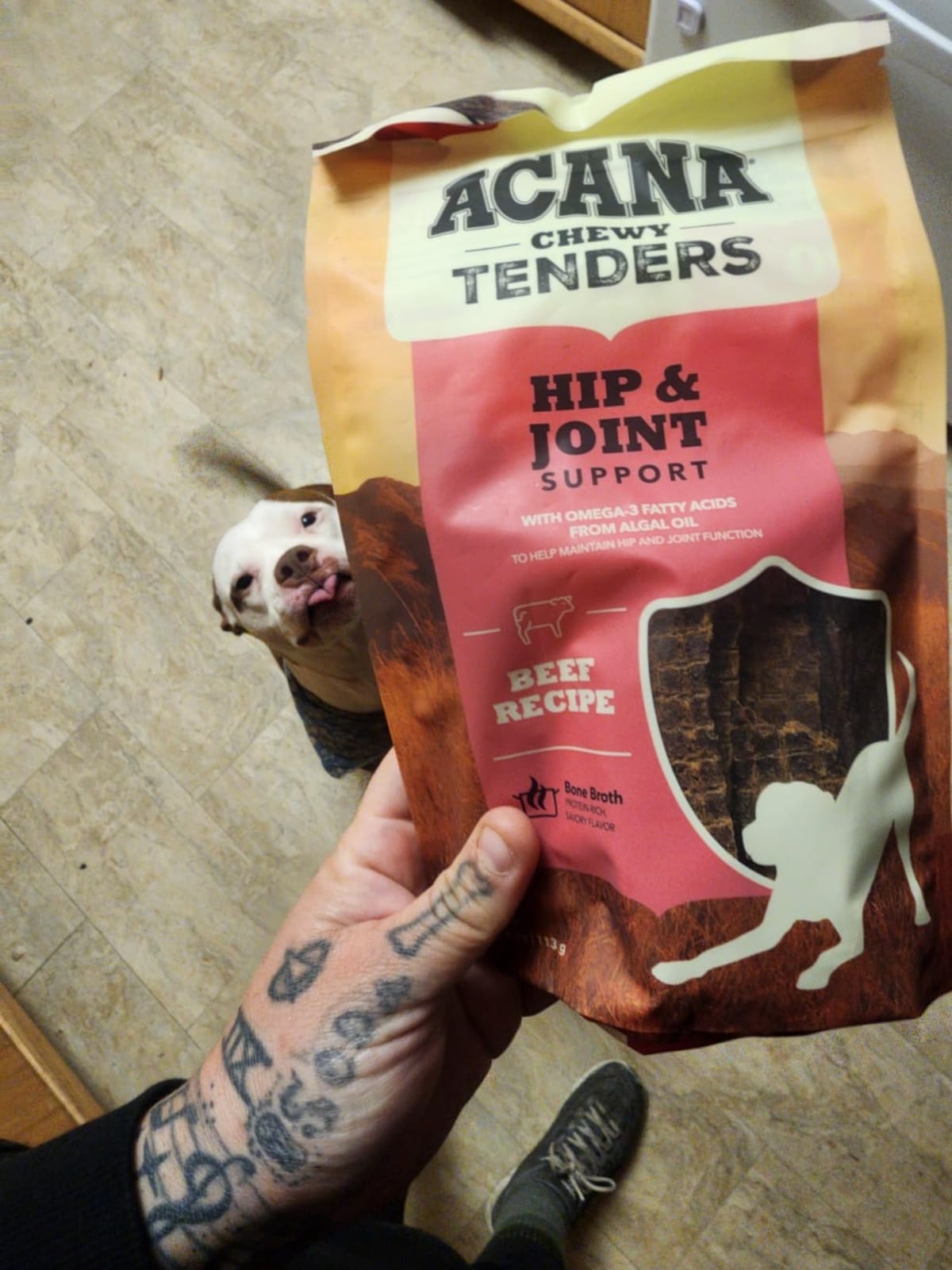Key Takeaways:
- Freeze-dried dog treats are generally safe and can offer a convenient, nutritious option for pet parents.
- It's essential to ensure that these treats are sourced from reputable brands and are part of a balanced diet.
- Understanding the freeze-drying process and its impact on food safety can help dog owners make informed decisions.
Freeze-dried dog treats have become increasingly popular among pet parents who are looking for convenient, long-lasting, and nutritious options for their furry friends. But with the rise in popularity comes the question: are freeze dried dog treats safe? This article will delve into the safety of these treats, the freeze-drying process, and what pet owners should look for when choosing the right treats for their dogs.
What is Freeze-Drying and How Does it Affect Dog Treats?
Freeze drying is a process that removes moisture from food through sublimation, which turns water directly from ice to vapor in a vacuum chamber. This method preserves the nutritional value of the food, maintains its original shape and texture, and extends its shelf life without the need for preservatives. Freeze-dried dog treats are made from various ingredients, including raw meat, organ meat, and even fruits and vegetables.
The Safety of Freeze-Dried Raw Meat for Dogs
Raw meat is often a key component of freeze-dried dog treats. While raw dog food diets have their proponents, they also come with concerns about harmful bacteria such as Salmonella and E. coli. However, the freeze-drying process means that most bacteria are killed or significantly reduced, making freeze-dried raw food a safer option than traditional raw diets.
Nutritional Benefits of Freeze-Dried Dog Treats
Freeze-dried dog treats are often praised for their health benefits. They retain most of the essential nutrients found in fresh food, providing a high protein diet that can contribute to your dog's health. Unlike raw food, which may lose nutrients over time, freeze drying preserves these nutrients, ensuring that your dog gets a nutritionally complete snack.
Understanding Complete and Balanced Diets
While freeze-dried dog treats can be a healthy addition to your dog's diet, it's crucial to remember that they should not replace a complete and balanced diet. Dog food brands often label their products as "complete and balanced," which means they meet the nutritional levels established by the American Feed Control Officials. Treats should be given in moderation alongside regular food.
The Role of High-Pressure Processing in Food Safety
High-pressure processing (HPP) is another method used to ensure the safety of freeze-dried pet food. HPP food is subjected to extremely high pressure, which eliminates bacteria without the need for high temperatures. This process can be used in conjunction with freeze-drying to create safe and sterile dog treats.
Are All Freeze-Dried Dog Foods Created Equal?
Not all freeze-dried dog foods are created equal. It's important for dog owners to choose products from reputable companies that use high-quality ingredients and follow strict food safety protocols. Reading labels and understanding the sourcing of the ingredients can help ensure that you're giving your dog safe and healthy treats.
The Convenience Factor of Freeze-Dried Treats
One of the reasons many pet owners opt for freeze-dried treats is their convenience. These treats have a longer shelf life than fresh meat or canned foods, making them easy to store and perfect for on-the-go situations. They can be used as a special treat, a training treat, or even added to regular food for an extra boost of flavor and nutrition.
The Evolution of Dog Diets: From Canned Food to Freeze-Dried Raw Food
The landscape of dog diets has seen a significant transformation with the advent of freeze-dried raw food. This shift from traditional canned food to freeze-dried options is driven by pet owners' increasing awareness of the benefits of feeding raw. Freeze-dried pet food offers a convenient alternative to a raw food diet without compromising on the nutritional value. The freeze drying process means that these foods retain the natural enzymes and nutrients found in raw freeze-dried foods, making them a superior choice for many dog owners who are committed to providing high-quality diets for their pets.
In contrast to canned food, which often contains preservatives and fillers, freeze-dried dog foods are typically made with pure, high-quality animal protein. This not only supports a dog's health but also caters to those with grain-free dietary needs. The long shelf life of freeze-dried products also means less waste and more cost-effectiveness for pet owners. As the trend towards natural and minimally processed diets continues, freeze-dried raw food is becoming a staple in the world of commercial pet food, offering a balanced approach to feeding raw while ensuring convenience and safety.
Exploring the Raw Diet Trend in Canine Nutrition
The raw diet for dogs, often referred to as "raw feeding," is a trend that's been gaining traction among pet owners who are looking to provide their furry friends with a diet that closely mimics what their ancestors might have eaten in the wild. Freeze dried dog foods play a significant role in this movement, offering a convenient and less messy alternative to traditional raw diets. By freeze drying food, manufacturers are able to preserve the nutritional integrity of raw meats and other ingredients, making it a viable option for those interested in raw feeding without the hassle of handling fresh, raw meats.
Freeze dried raw food is not just about mimicking the ancestral diet; it's also about the perceived health benefits. Proponents of raw diets argue that such feeding practices can lead to shinier coats, healthier skin, improved dental health, and higher energy levels. However, it's important to consult with a veterinarian before transitioning your dog to a raw diet, as it's crucial to ensure that your dog's diet is nutritionally balanced and safe, especially for dogs with a compromised immune system or specific health concerns.
The Shelf-Life and Storage of Freeze-Dried Dog Food
When considering freeze-dried dog food for your pet, it's essential to understand its shelf-life and storage requirements. Unlike traditional kibble or canned foods, freeze-dried food boasts an impressive shelf-life due to the removal of moisture, which inhibits the growth of bacteria and mold. This means that you can stock up on your dog's favorite treats without worrying about them spoiling quickly. However, it's crucial to store these foods in a cool, dry place, away from direct sunlight to maintain their quality and nutritional value over time.
Proper storage is not only about maintaining the food's freshness but also about preserving its nutritional integrity. Once the package is opened, it's advisable to seal it tightly or transfer the contents to an airtight container. This practice prevents rehydration from the surrounding environment, which could lead to spoilage. Additionally, keeping the food sealed ensures that the natural flavors and aromas that dogs love remain intact, making mealtime an exciting event for your furry friend every day.
The Allergenic Potential of Freeze-Dried Dog Food
When considering freeze-dried dog food for your furry friend, it's essential to be aware of its allergenic potential. Just like any other type of dog food, freeze-dried options can contain ingredients that may trigger allergic reactions in some dogs. Common allergens include beef, chicken, dairy, and wheat, which are often found in various dog treats and foods. If your dog has a history of allergies, it's crucial to carefully read the ingredient list of any freeze-dried product before introducing it to your dog's diet.
However, many freeze-dried foods offer single-ingredient treats or limited ingredient diets that can be beneficial for dogs with sensitivities. These simpler formulations can help you pinpoint and avoid specific allergens, making it easier to manage your dog's health. Always consult with your veterinarian before making any significant changes to your dog's diet, especially if they have known allergies or sensitivities. They can provide personalized advice and may recommend conducting an elimination diet to identify the culprit behind any adverse reactions.
The Cost-Effectiveness of Incorporating Freeze-Dried Food into Your Dog's Diet
Integrating freeze-dried food into your dog's diet can seem like a pricey endeavor at first glance. The process of freeze-drying requires specialized equipment and can result in a higher price tag compared to conventional kibble. However, when considering the cost-effectiveness of these treats, it's important to factor in their long shelf life and the concentration of nutrients packed into a smaller volume of food. This means you might be using less of the product over time, which can balance out the initial investment.
Moreover, the benefits of high-quality ingredients and the retention of nutritional value can contribute to better overall health for your dog. Healthier dogs may require fewer trips to the vet, which can lead to savings in the long run. When evaluating the cost, consider the potential for reduced waste, as freeze-dried treats often come in resealable packages that maintain freshness without the need for preservatives. By weighing the upfront costs against the long-term benefits, you can make an informed decision about whether freeze-dried food is a financially viable option for your dog's diet.
The Comparison Between Freeze-Dried and Dehydrated Foods
When pet owners are exploring options for their dog's diet, they often come across both freeze-dried and dehydrated foods. While they may seem similar, there are distinct differences between the two. Freeze-drying involves a process called lyophilization, where the food is frozen and then the moisture is removed in a vacuum, resulting in a lightweight and long-lasting product. This method preserves the food's cellular structure, nutrients, and flavor, making it a highly nutritious option for your dog.
On the other hand, dehydrated foods are created by applying low heat over an extended period, which slowly removes the moisture content. Although this process also results in a shelf-stable product, it can cause a greater loss of nutrients and a change in texture and flavor compared to freeze-drying. For dog owners who prioritize their pet's nutrition and dog's health, freeze-dried options might be the superior choice. They provide a closer approximation to raw diets, which can be beneficial for dogs with specific dietary needs or those who simply thrive on high-quality, minimally processed foods.
The Intersection of Dog's Health and Freeze-Dried Pet Food
When it comes to a dog's health, the quality and type of food they consume is paramount. Freeze dried pet food is often touted for its nutritional benefits, as the freeze drying process typically retains more nutrients than other methods of food preservation, such as cooking or canning. This means that dogs can enjoy the benefits of raw freeze dried foods, which can include a variety of meats, fruits, and vegetables, without the addition of preservatives or fillers that are often found in traditional dog foods. It's a step towards a more natural diet, which can be particularly beneficial for dogs with grain sensitivities, as many freeze dried meats and meals are inherently grain free.
However, it's essential to recognize that not all freeze dried products are created equal. As a pet owner, it's your responsibility to research and choose high-quality freeze dried dog foods that meet all the nutritional requirements of your pet. This includes understanding the source of the ingredients, the process of freeze drying food, and the company's commitment to maintaining high standards. For dogs with a compromised immune system or other health issues, it's even more critical to select freeze dried pet food that supports their specific dietary needs and helps maintain their overall well-being.
Special Dietary Needs: How Freeze-Dried Foods Cater to Dogs with Health Concerns
For dogs with compromised immune systems or specific health conditions, the right diet is crucial. Freeze-dried meats and foods offer a viable solution for these sensitive canines. The high pressure processing (HPP) used in the production of many freeze-dried pet foods ensures that harmful bacteria are eliminated, making it a safer option for dogs that may not handle pathogens well. This process allows pet owners to feed raw without the associated risks, providing peace of mind and promoting their dog's health.
Moreover, the grain-free options available in the freeze-dried category are a boon for dogs with allergies or intolerances to grains. By incorporating freeze-dried raw food into a dog's diet, owners can avoid common allergens found in many commercial pet foods. The dehydration that occurs in the freeze drying process means that these foods are concentrated sources of nutrition, allowing for easier digestion and absorption of essential nutrients. This is particularly beneficial for dogs with digestive issues or those that require a more nutrient-dense diet to support their health and wellbeing.
Grain-Free Options and Dietary Restrictions
For dogs with dietary restrictions or sensitivities, freeze-dried treats can be a great option. Many freeze-dried dog treats are grain-free, catering to pets that require a specific diet. Always check the ingredients to ensure that the treats you choose align with your dog's dietary needs.
The Importance of Moderation in Treat Feeding
While freeze-dried treats can be a healthy part of your dog's diet, moderation is key. Treats should not make up more than 10% of a dog's daily caloric intake. Overfeeding treats can lead to weight gain and nutritional imbalances, so it's important to keep track of how much you're giving your dog.
Potential Risks and How to Mitigate Them
As with any pet foods, there are potential risks associated with freeze-dried treats. Bacterial contamination is a concern, especially if the freeze-drying process is not done correctly. To mitigate these risks, purchase treats from trusted brands, and consider rehydrating the treats with warm water to ensure they are safe for consumption.
The Impact of Freeze-Dried Treats on Dental Health
Chewing on freeze-dried meats can have a positive impact on your dog's dental health. The texture of the treats can help remove plaque and tartar buildup, promoting healthier teeth and gums. However, these should not replace regular dental care practices such as brushing and professional cleanings.
Special Considerations for Dogs with Compromised Immune Systems
For dogs with compromised immune systems, extra caution should be taken when introducing any new foods, including freeze-dried treats. Consult with a veterinarian before making any dietary changes to ensure that the treats are appropriate and safe for your dog's specific health condition.
The Environmental Impact of Freeze-Dried Dog Treats
Freeze-dried dog treats are not only beneficial for your pet but also for the environment. The process requires less energy than traditional kibble production and results in products with a longer shelf life, reducing food waste. Additionally, the lightweight nature of freeze-dried treats means lower transportation emissions.
How to Introduce Freeze-Dried Treats to Your Dog's Diet
Introducing new treats to your dog's diet should be done gradually. Start with small amounts of freeze-dried treats and monitor your dog's reaction. If there are no adverse effects, you can slowly increase the quantity. Always ensure that treats are given as part of a balanced diet.
The Versatility of Freeze-Dried Treats in Training and Bonding
Freeze-dried treats can be an excellent tool for training and bonding with your dog. Their high palatability makes them a desirable reward, and their easy-to-handle size and texture make them convenient for repetitive training sessions. Use them to reinforce positive behavior and strengthen your bond with your pet.


Can freeze-dried dog treats replace a dog's regular diet?
No, freeze-dried dog treats should not replace a dog's regular diet. They should be used as a supplement to a nutritionally complete and balanced diet, making up no more than 10% of the dog's daily caloric intake.
Are freeze-dried dog treats safe for all dogs?
Freeze-dried dog treats are generally safe for most dogs when sourced from reputable brands and given in moderation. However, dogs with compromised immune systems or specific dietary needs should have treats introduced cautiously, and always under the guidance of a veterinarian.
How should I store freeze-dried dog treats?
Freeze-dried dog treats should be stored in a cool, dry place away from direct sunlight. Ensure the packaging is sealed properly to maintain freshness and extend shelf life. Some treats may require refrigeration after opening, so always check the label for storage instructions.

Freeze-dried dog treats offer a safe, nutritious, and convenient option for pet parents looking to provide their dogs with high-quality snacks. The freeze-drying process preserves essential nutrients and eliminates many of the risks associated with raw foods. When sourced from reputable brands and used in moderation as part of a balanced diet, these treats can contribute positively to your dog's health and well-being. Always consult with a veterinarian if you have concerns about introducing new treats to your dog's diet, especially if they have health issues or dietary restrictions.










